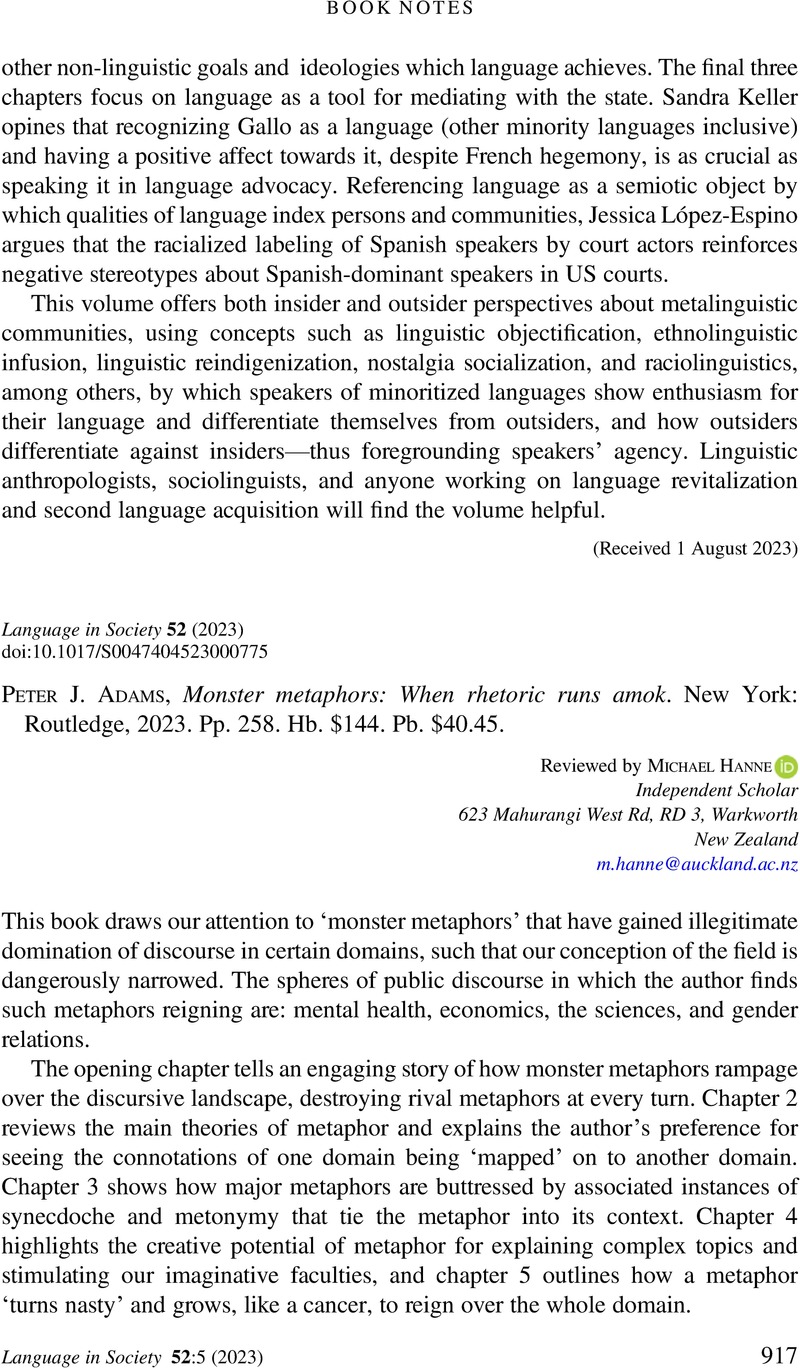No CrossRef data available.
Article contents
Peter J. Adams, Monster metaphors: When rhetoric runs amok. New York: Routledge, 2023. Pp. 258. Hb. $144. Pb. $40.45.
Review products
Peter J. Adams, Monster metaphors: When rhetoric runs amok. New York: Routledge, 2023. Pp. 258. Hb. $144. Pb. $40.45.
Published online by Cambridge University Press: 01 December 2023
Abstract
An abstract is not available for this content so a preview has been provided. Please use the Get access link above for information on how to access this content.

- Type
- Book Notes
- Information
- Copyright
- Copyright © The Author(s), 2023. Published by Cambridge University Press



